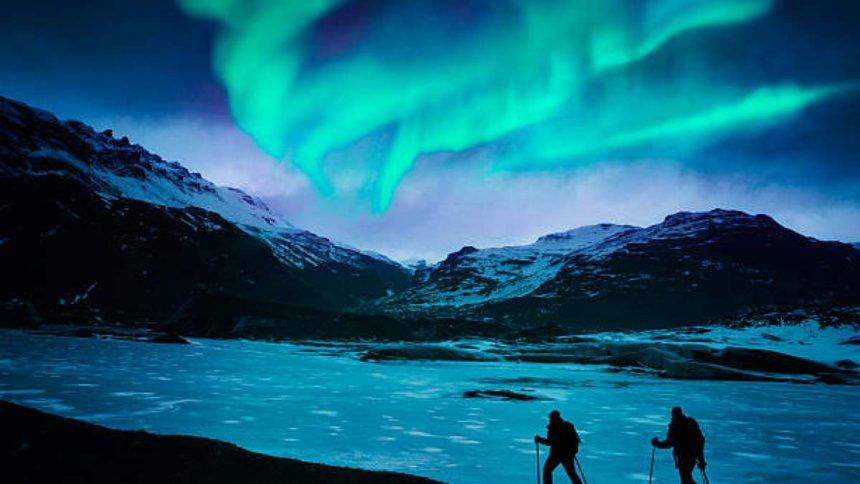At night, a stunning display of vibrant green, red, blue, and yellow lights can be observed in the sky near the Earth’s poles. These mesmerizing lights are known as auroras. Depending on their location, they are referred to as the Aurora Borealis in the northern hemisphere and the Aurora Australis in the southern hemisphere.
The Aurora Borealis and Aurora Australis
The Aurora Borealis, also known as the Northern Lights, is typically visible around 70 degrees north latitude. In contrast, the Aurora Australis, or Southern Lights, is seen around 70 degrees south latitude. These auroras generally occur at altitudes between 80 to 160 kilometers but can sometimes be observed as high as 1,100 kilometers. Their appearance varies from circular shapes to rays or wings, and they often produce crackling sounds. The lights are known for their rapid movement across the sky.
Best Places to View Auroras
Exceptional views of the polar lights can be enjoyed in regions like Hudson Bay in Canada, Northern Scotland, Southern Norway, and Sweden. They are also visible in South America and Sri Lanka. Historically, Sri Lankans believed these lights to be a message from Gautam Buddha.
The Science Behind the Polar Lights
The exact source of the auroras remains a subject of study. However, scientists suggest that auroras are caused by electrical discharges in the Earth’s outer atmosphere. The phenomenon was first investigated in 1716, when unusual auroras were observed in Europe. English astronomer Edmund Halley determined that these lights are influenced by the Earth’s magnetic field.
The Role of Solar Wind
The sun continuously emits charged particles, such as protons and electrons, through a process known as solar wind. These particles travel through space at speeds up to 480 kilometers per second. When they reach Earth, they interact with the planet’s magnetic field, especially near the poles. This interaction alters their velocity and direction, causing them to collide with atmospheric molecules. This collision ionizes the molecules, producing the colorful displays of the auroras.
Magnetic Storms and Auroras
Auroras can become particularly vivid during magnetic storms, which occur when there are significant disruptions in Earth’s magnetic field. These storms often enhance the intensity of the auroras, making them even more spectacular.
Understanding the polar lights provides insight into the intricate relationship between the sun’s activity and Earth’s atmosphere, contributing to one of nature’s most beautiful phenomena.




